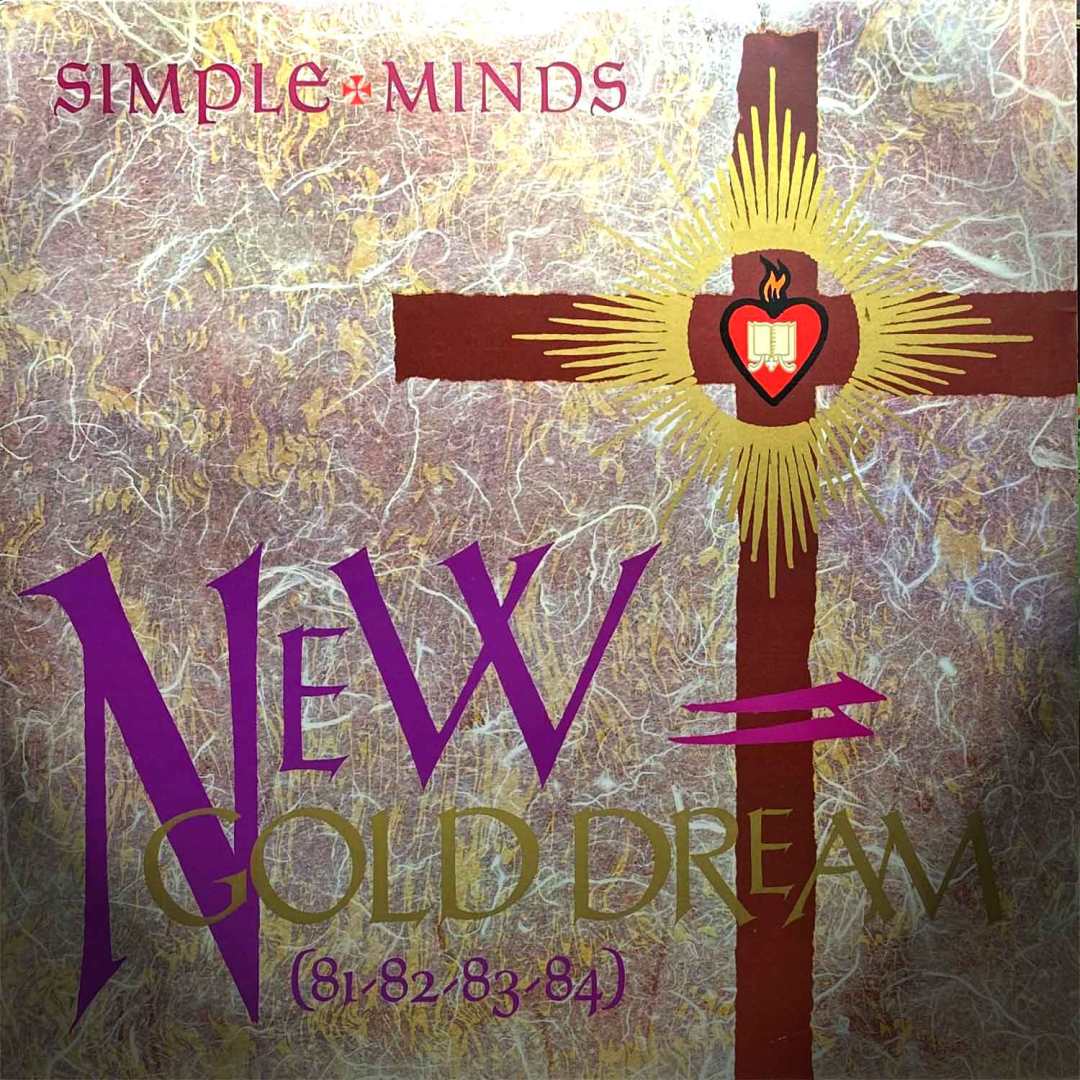
This day in 1982, Simple Minds released their game-changing opus, “New Gold Dream [81, 82, 83 84].” Let’s review our thoughts as written several years ago when we spent half a year poring over the career of Simple Minds on a mighty Rock G.P.A. thread that lasted over 100,000 words.
The previous Simple Minds album, “Sons + Fascination,” was the gateway to the top ten UK album chart for the long-gestating Scot art-rockers. Their kettle was beginning to boil now, and in late 1981, the band found themselves in Australia, where pirate radio play had the band with their first hit in any nation when “Love Song” cracked the Oz top 20, and the band found themselves getting their first gold discs for sales of their album there. They were double-teamed as the opening act for the like-minded Icehouse for their tour there, and Iva Davies’ band reciprocated by opening for Simple Minds’ UK tour of 1981. There was now the stirrings of activity between the band and their prospective audience; no longer relegated to cult [with a lower case “c”] status, but threatening the top tens of the world charts.
That line would be crossed in the UK when their pre-release single from “New Gold Dream [81, 82, 83, 84],” the exuberant “Promised You A Miracle” was their first top ten hit in the UK. I had become a fan in late 1981 when I had bought the “Sweat In Bullet” 2×7″ and I moved forward with the band’s releases. I recall seeing the US “Promised You A Miracle” 12″ while out one evening on a record buying excursion and I snapped it up. It was novel seeing Simple Minds records that easily as they had previously only troubled the import bins.
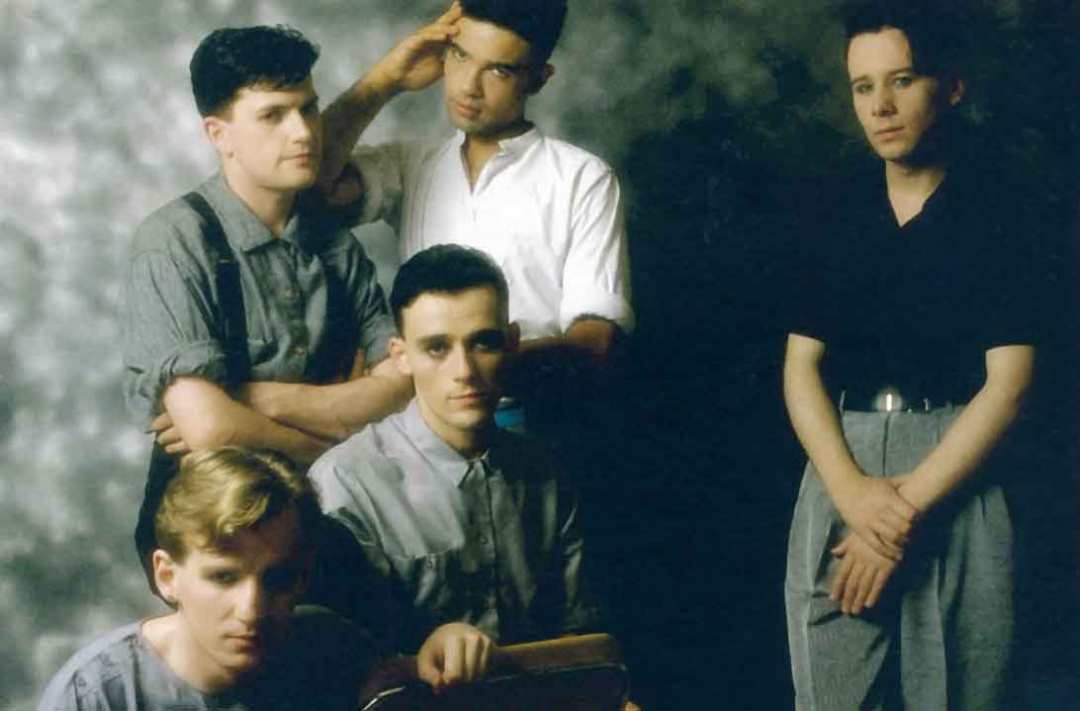
“New Gold Dream [81, 82, 83, 84],” was the first Simple Minds album to be widely accessible in the US. While the debut album was released by Jem in The States, the subsequent four albums never surfaced here in any form save for the 1981 Stiff-America compilation “Themes For Great Cities.” That album had collected tracks from albums 2-5 and would make anyone reading these words a fan of the band. By the time of “New Gold Dream’s” 1982 release, the band had signed with A&M records in the States, and that meant availability, promotion, and low price.

It was hard not to buy “New Gold Dream” upon its US release. A&M did everything but pay you to take it home. It sported a $6.98 list price at a time when the industry standard was $8.98. Then it was available in almost any record store and most importantly, it was pressed on gorgeous transparent gold vinyl that had burgundy marbleizing running through it. The inner sleeve was printed with copper ink. I bought it and was immediately floored, visually and aurally. I’ve since seen images of the Virgin UK pressing and even the US labels were superior. [N.B. Malcolm Garrett did not agree…] My hat is tipped in the direction of the US A+M art staff. They did a bang-up job on this release, but this album didn’t just lookgood.

Producer Peter Walsh had just emerged on the Virgin label after helping the debut album by Heaven 17 the year previous. Simple Minds loved his remix of the “Sweat In Bullet” single and his full production of the “Promised You A Miracle” single and saw no reason not to move to another producer for their new album. Walsh emphasized a powerful but delicate production style that was far from the funk dance sound featured on the “Sweat In Bullet” single. Keyboards predominated and sounded like they were applied with an airbrush. The basslines were supple and sensual…yet still at the forefront of this eloquent music. Singer Jim Kerr was now offering lyrics that were as far from the introverted paranoia of the last three [okay, four] albums as possible. Lush dynamics practically erupted from these songs and the overall vibe was romantic and emotional; bursting with positivity. While I was an immediate fan of this album in 1982, the intervening decades have seen it rise considerably in my esteem to the point where, much like Peter Gabriel’s third album, I look back on it as a singular, if not towering achievement in music that no one, least of all the artists involved, ever came close to matching or bettering.
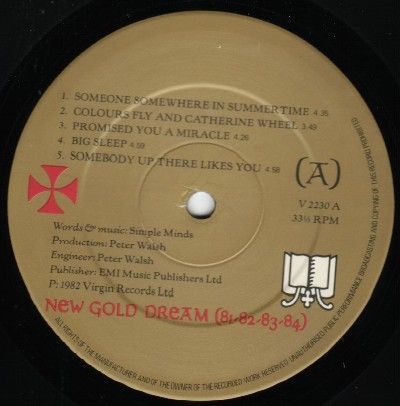
The album began with the incredible warmth and romance of “Someone, Somewhere [In Summertime],” a song that would have been inconceivable by the band as little as a year earlier. The first words out of Jim Kerr’s mouth were “Stay, I’m burning slow;” an invocation of desire that would have absolutely melted the Teutonic heart of the alienated narrator of epics such as “This Fear Of Gods.” It would have been all the more shocking had this not been the first Simple Minds album I’d purchased, and I’d followed the group from the early years of their development, but it’s not unusual in the grand scheme of things for ice to follow fire, or vice versa. After all, if John Foxx could have gone from the ultimate cold wave of “Metamatic” to the warmth of “Europe, After The Rain” in just 12 months, who’s to say that Simple Minds could also not follow suit?
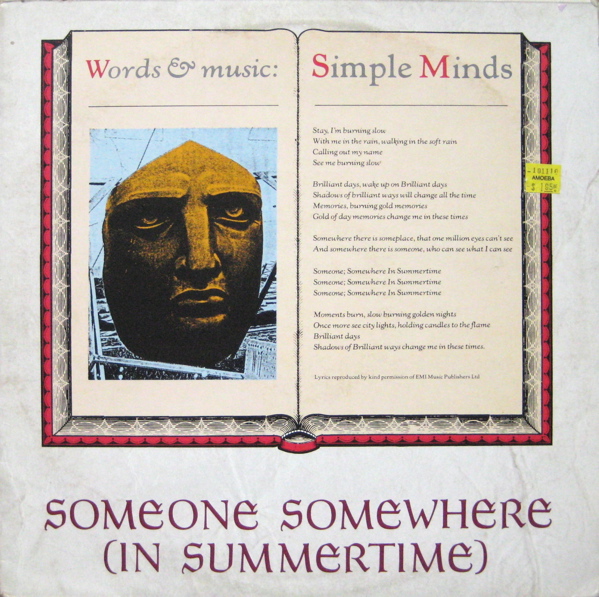
Charlie Burchill’s flanged guitar sounded more like tubular bells, which were echoed by Mike MacNeil’s keyboards. The steady beat was kept this time by Mel Gaynor. Brian McGee had enough time on the road incessantly after the “Sons + Fascination” tour and bowed out of the band before the recording of the new album commenced. Kenny Hyslop of The Zones had recorded the pre-release single of “Promised You A Miracle” but didn’t stick around long. Mike Ogletree [Ex-Cafe Jacques] gave the drum stool a try, but the band and producer Pete Walsh wanted more power. Enter session man Mel Gaynor, whom Walsh knew and recommended.
His straightforward power fit the new direction that the band was moving in where the old ways of abstract Krautrock trance rock were becoming more warm and funky, as “Sweat In Bullet” had hinted earlier. The earnest yearnings of “Summertime” showed a new interest in the spark of human relationships to ignite the band’s sensual side. Nowhere was this more apparent than on the second track on side one, “Colours Fly And Catherine Wheel;” a sensual and funky meditation on the dark side of love’s power.
First of all, Derek Forbes’ positively voluptuous bass line was one of the most compulsively obsessive sequences of rhythm the band had trafficked in yet. Once I hear it, it remains lodged in my cranium for long hours at a time. As recently as 2008, Jim Kerr opined that it represented “Derek at his best,” and I’m not one to differ. With Mike Ogletree on drums, this gave Forbes the spotlight since Ogletree favored a light and percussive hand not heavy on the drumsticks; a far more different approach than the band had either before or after him.
Following an abrupt and awkward start, like a stack of falling dominos, the track settled into an impossibly funky groove as Charlie Burchill’s guitar wove a languid spell previously known as the “skyscraper riff” to the band. It conjured impressive vistas on the horizon that moved past the viewer as they rolled inexorably, and luxuriantly forward. Most dramatically of all, Jim Kerr was now intoning of femme fatales [Italian ones, presumably] and love that “tranquilized just before it killed.“ The chorus of the number was nothing less than brilliant. In a move that carried on from his reductive but highly memorable chorus of “The American,” Kerr found a way to connect back with Krautrock vocally by repeating the key phrase of the chorus [the verb – to fall] numerous times with the the words weaving a dazzling tapestry that crossed the line into trance repetition most capably.
“Catch a boy fell falling,
Fall in love fell falling,
Catch a boy fell falling,
Fall in love fell falling,
Catch a boy fell falling,
Out of the sky.”none
Colors Fly + Catherine Wheel
The first single from the album, end the band’s ticket into the UK top 20 was the shimmering and dynamic “Promised You A Miracle.” It carried on from the vitality of “Wonderful In Young Life” from “Sister Feelings Call” in that it leaped like a gazelle from the speakers in the same way; imbued with a light effervescence that was still new to the group’s outlook. Kenny Hyslop only occupied the drummer’s stool long enough to record this track [he’s famously not in the video clip] but his staccato rhythmic hook [echoed by Mike MacNeil’s synth riff] made the track highly memorable.
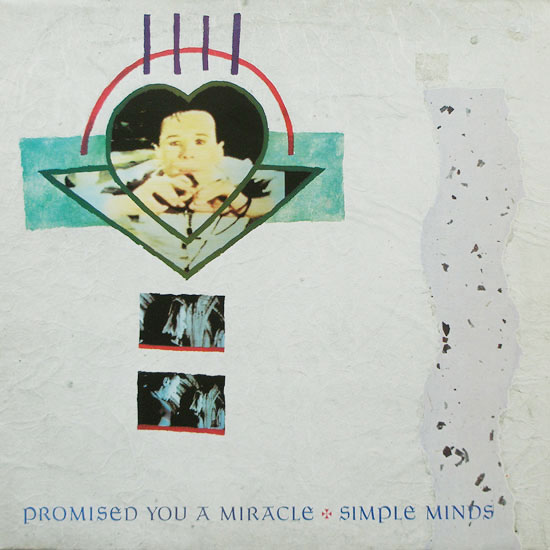
In fact, the genesis of the cut may come down to Hyslop. He’d brought along radio tapes for road listening on the band’s tour and they were taken with a funk track’s horn riff, which they appropriated for this number. The basslines rolled and crashed like thunderous waves breaking on the shores of Hyslop’s drumrolls throughout this song and when Forbes’ serpentine bass hook flickered like a snake’s tongue before the chorus, it’s all over for any listener’s will to resist “Miracle’s” effulgent charms. This song was the sound of all stops being pulled out in a successful attempt to conquer the listener. Before this track, even Burchill could not imagine the band’s songs on the radio. Now, they would have a good dozen years of a chart run ahead of them following this breakthrough.
The energy of side one ebbed following the dynamism of “Miracle.” “Big Sleep,” like many tracks here, was hung upon a colossal, flanged baseline courtesy of Forbes, who plays it slow and deliberately, to allow every note to sink its fangs deep into the listener’s mind. Charlie Burchill proffered open “Andy Summers” chords in a rare show of New Wave gambits being used here. Elsewhere, his wailing banshee guitar on the song’s coda echoed Kerr’s meditation on the finality of death.
On side two of “New Gold Dream [81, 82, 83, 84],” the title track began with an relentless rhythm box chugging away, but on the US LP, the title track was edited by nearly a minute to 4:46. The track began instead with the song’s distinctive bass rondo echoed with Mike McNeil’s synths – also playing a rondo at a higher pitch. In any case, the song instantly became a Simple Minds benchmark for me. I love the way it represents the furthest mutated strain of Krautrock in its warmest possible guise.
Forbes’ bass rondo stayed in place while the synths surged ahead, giving the song a curious sense of advancement and stasis at the same time. It transfixes my mind whenever I hear it. Ogletree played the drums lightly, as was his wont, with an emphasis on cowbell [strangely enough, already part of Simple Minds’ toolkit from “Sweat In Bullet”]. However, this was the single track on the album featuring two drummers. Mel Gaynor was overdubbed for extra oomph on the track. Producer Peter Walsh recorded the album as live sessions at the behest of Virgin Records, who asked to have this album reflect the band’s live energy. To this end, Walsh recorded multiple takes of each song live to multitrack, and he assembled the optimum takes of each element for the final mix down.
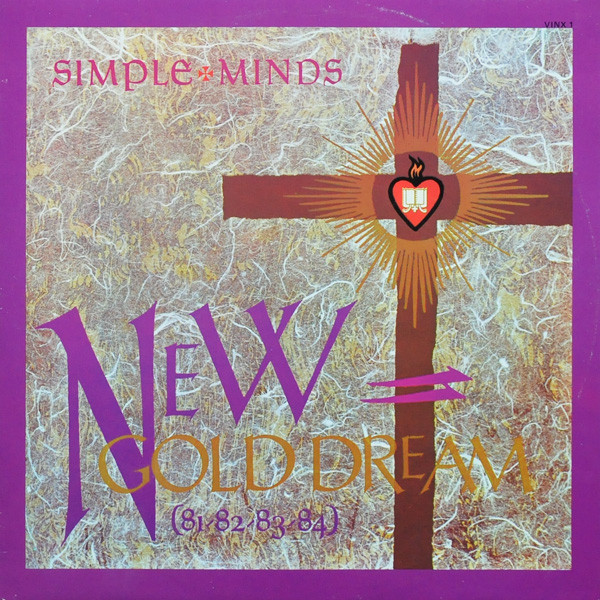
Amazingly enough, this incredible track was only released as a single in Italy [of course!] in both a 7″ edit [using the US LP edit] and an extended remix of 6:52, which is strangely called the “German remix” by Minds’ fans. This was because the track surfaced outside of Italy only on the original West German pressed CD of this title without fanfare, but I recall the “eureka” moment that ensued when my friend Tom found a copy of this CD in 1985. Talk about buried treasures!
“Empires And Dance and Sons And Fascination were so crammed, the sound was so heavy, the way it feels before a storm breaks. When the storm is over, the air is clear and clean. That’s what New Gold Dream felt like.”
none
Jim Kerr
It is a holy grail of sorts to me to one day hear the full length ten minute take of “New Gold Dream [81,82,83,84]” that was edited down for all subsequent releases. What I would not give for a studio version of this song that lasted that long! One hopes that any NGD mega-box would cough that full-length take up. Kerr’s vocals began pitched low and eventually reached for the skies as the song progressed. Walsh’s production wrapped the entire band in a shimmering, glistening envelope that emphasized light and air at the expense of grit and shadow. For that reason, it has become almost a self-referential album with few connections to the outside world as it constructed a hermetic seal, cocooning the listener in whorls of dreamlike sound.
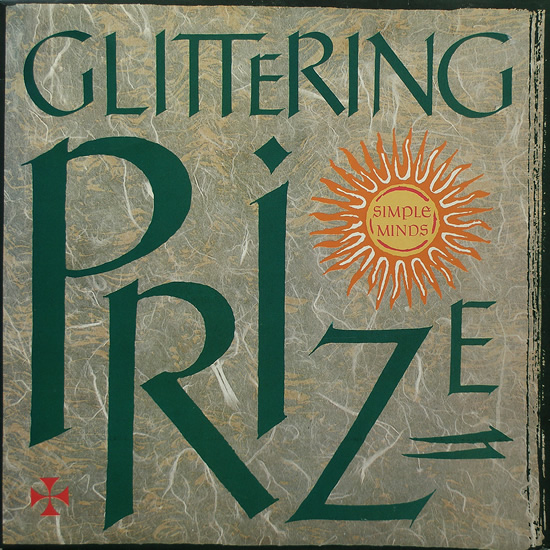
The second single from the album was “Glittering Prize;” a delicate and gentle paean of almost monastic devotion to the ideal of romantic love given the lightest and most insouciant setting possible. Forbes’ bassline was a wonder of subdued power and intricacy that remained a paragon of complexity while being nestled within a song that seemed as light as a soufflé. The bass tenderly caressed the song in a spirit of good fellowship and used its strength and power to allow the melody to hold itself aloft and take flight. It also sported the coldest intro that any single ever had [just one chord] and gave the band a song to start “on the one” as tightly as any James Brown funk workout while remaining an entirely different beast.
The mood turned more somber when “Hunter And the Hunted” began as built upon a bass line rondo that was progressively overlaid with delicate Mike MacNeil synth lines until it formed a web of subdued passion, gradually fading out as MacNeil occupied all of the space in the intro. Forbes then re-entered the song on fretless bass; giving the synth leads a subtle rhythmic impetus that drove the song forward. Jim Kerr sang in his lowest register for the quietly devastating chorus where powerful lyrical imagery like “Kyoto in the snow – heaven’s far away” could not have been painted in a more darkly romantic light.
This track also paid host to the strangest credit to land on a Simple Minds record. None other than Herbie Hancock played the song’s distinctive synth solo that lasted from the song’s middle eight through to its conclusion. He was recording at Townhouse studios when the band were laying it down and they called the man in to see if he would play on it. Not just any jazz keyboardist could have made a berth for himself on a Simple Minds number, but this instance showed that fortune was beaming on the band and their efforts. His low-key injection of jazz DNA resonated within the dark structure that the band had built, making it greater than the sum of its parts.
The one look backward on this album was the album’s introverted closing track, “King Is White & In The Crowd.” It was the album’s one link with the past. It featured a minor key melody and hypnotic trance rhythms as it examined a political subtext [the assassination of Anwar Sadat] in a result that would have been at home on their third album as much as this one though the hazy, dreamlike production here was nothing like the monolithic sounds of “Empires + Dance.” Not surprisingly, it was one of the first tracks written after wrapping production on “Sons + Fascination.” It strongly radiated the vibe of the previous two albums, albeit within the shimmering context of the band’s present. One last dip into the Krautrock toolkit with its trance rhythms and long, repetitive 7:00 running time for good measure.
I have heard live recordings of this song from a few years later where Forbes’ bassline had undergone a dramatic metamorphosis to become the dominant note of the song in a fashion that I can only describe as the bass riff of god. The heavily flanged monster that dominated the proceedings on recordings like the Irvington broadcast of 1984 were jaw-droppingly astounding in ways that showed how dramatically Simple Minds forward progress would be, at least for the next few years. The band were not content to write songs and let them calcify onstage into a rote pantomime. This band were striving to re-imagine, and re-model their history by taking their songs and refining them in the fire of performance like the gold that they were.
With “New Gold Dream [81, 82, 83, 84],” the band had shed their constructivist chrysalis to emerge as iridescent butterflies held aloft on the classic themes of eros and thanatos. Most of the songs examined desire from a wholly Apollonian perspective of Romantic idealization. At most smoldering with an intense passion that only young men seem truly capable of. A few of them, [“Big Sleep” and “King Is White And In The Crowd] investigate death and demise but they maintain a similar distance from the center of these strong emotions. In spite of the intellectual distance that their songs kept from their increasingly less abstract subject matter, they still seemed to be somewhat tentative in their level of commitment. Perhaps for this reason, Jim Kerr called “New Gold Dream [81, 82, 83, 84]” a “coffee-table album” half-dismissively, shortly after its release. Their next album would address this sense of restraint.
The article was adapted from postpunkmonk.com.

